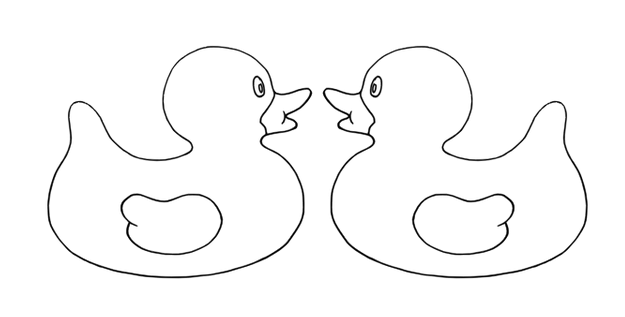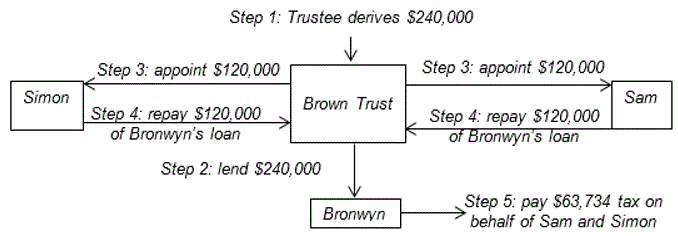
The Full Federal Court in Commissioner of Taxation v Guardian AIT Pty Ltd ATF Australian Investment Trust [2023] FCAFC 3 has dismissed the Commissioner’s appeal against decisions at [2021] FCA 1619 of the primary judge, Logan. J, not to impose the reimbursement agreement assessments on the trustee of the AIT under section 100A of the Income Tax Assessment Act (ITAA) 1936.
But the Full Federal Court has unanimously taken a radically different construction of the facts in the case to Logan J. to find that Part IVA of the ITAA 1936 was correctly applied to the Guardian AIT facts to support the Commissioner’s Part IVA determination, run as an alternative to section 100A, made in respect of the 2013 income year.
Reimbursement agreements – a blunt tool?
On this blog we have queried whether the section 100A reimbursement agreement regime is a tool useful to the Commissioner that gives the Commissioner scope to attack trust distributions that are no part of a trust stripping arrangement involving parties external to the trust: 100A trust reimbursement agreement not the tool to fix the bucket company dividend washing machine https://wp.me/p6T4vg-pM . We have also blogged about bucket companies lately, see: Can a family discretionary trust distribute income to its corporate trustee? https://wp.me/p6T4vg-rH
Without going into the detail in this blog post, the Full Federal Court in Guardian AIT has rather confirmed our thoughts about the utility of section 100A. We don’t see that the decision vindicates or gives legal support or backing to the Commissioner’s products and section 100A-based approaches in Taxation Ruling TR 2022/4 and Practical Compliance Guideline PCG 2022/2. Oddly the Commissioner finalised TR 2022/4 and PCG 2022/2 before Guardian AIT ran its course.
In the meantime there is another section 100A case on foot: BBlood Enterprises Pty Ltd v Commissioner of Taxation [2022] FCA 1112, which is also on appeal to the Full Federal Court and there is also the prospect of appeal in Guardian AIT to the High Court.
Part IVA sharpened up?
But Part IVA is a different matter. The Full Federal Court in Guardian AIT has warned how susceptible certain types of discretionary trust strategies, particularly discretionary trust strategies involving trust distributions to bucket company beneficiaries, may be to Part IVA.
This leads me to the key point of difference on the facts in the case between the Full Federal Court and Logan J. mentioned at the outset. Logan J. accepted Mr Springer’s contention that his company, AIT Corporate Services Pty Ltd (AITCS), was set up to accumulate assets for asset protection. Although the Full Federal Court accepted this as a tenable explanation in the 2012 income year, despite AITCS clearing out its asset, the distribution receipt from the AIT back to the AIT as a dividend; repeating the process to clear out the 2013 trust distribution back to the AIT in the 2013 year demonstrated AITCS wasn’t:
- holding or protecting anything for asset protections reasons; or
- more particularly planning to hold or protect assets accumulated or to be accumulated in the company.
AITCS was plainly being used as a bucket company to receive a trust distribution in the 2013 income year which allowed AITCS to distribute a franked dividend back to the AIT which could then be distributed tax advantageously by the AIT to Mr Springer, a non-resident.
The apparent counterfactual
The Full Federal Court had no difficulty accepting the Commissioner’s Part IVA counterfactual contended in the appeal. That counterfactual was that the AIT would have distributed 2013 year AIT income to Mr Springer directly which “might reasonably be expected to have been included” in 2013 income taxable to the trustee under Division 6 of Part III of the ITAA 1936. That distribution could have been made to Mr Springer without the circularity of the “washing machine” distribution going to AITCS, then back to the AIT as franked dividend and then, finally, going to Mr Springer as NANE income being a form of income not taxable to the trustee nor to Mr Springer under Division 6.
Circularity and the form of the scheme
The Full Federal Court noted the circularity of the scheme which the Commissioner could and did take into account under paragraph 177D(2)(b) of Part IVA in considering the form of the scheme.
Commercial rationale or explanation of the scheme?
The difficulty under the Full Federal Court Part IVA analysis for the AIT was that the only difference in effect between the scheme and the counterfactual was that, under the scheme, the income distribution to the non-resident beneficiary Mr Springer was tax free NANE income. Under the counterfactual though, tax on the trustee of AIT at the highest marginal rate under Division 6 might reasonably have been expected. The same commercial outcome viz. income in Mr Springer’s hands within eight months of the end of the 2013 year of income confirmed that the only difference in what happened between the scheme, and reasonably expected to happen under the counterfactual, was the tax effect: a tax benefit the Commissioner could posit under Part IVA.
section 177CB – tax gives no explanation
The Full Federal Court noted that, following amendment to Part IVA which introduced section 177CB and sub-section 177CB(4) in particular, the tax impact of the scheme viz. the “operation of the Act”, or, more pointedly, the lower tax cost choice, is now expressly excluded as something that might reasonably be expected viz. the tax impact is now precluded by legislation from being a basis for a Part IVA counterfactual. Shortly stated that means the better tax outcome can no longer be a reasonable justification for choosing to implement a scheme caught under Part IVA.
Observations
Once the façade of an asset protection asset accumulating role for AITCS was identified by the Full Federal Court then AITCS was left exposed as a bucket company with a role in a tax scheme to re-purpose a trust distribution as a franked dividend to the tax advantage of Mr Springer in the 2013 year. In the context of potential Part IVA counterfactuals the Commissioner can raise, the AITCS bucket company can be viewed as unfortunately placed as both:
- AITCS was a beneficiary of the AIT viz. the bucket company characteristic; and
- shares in AITCS were owned by the AIT which facilitated the payment of trust income distributed to AITCS as dividends back to the trust;
enabling the loop or circularity which allowed the AIT to route income via AITCS as a franked dividend back to itself. But a clear or obvious alternative for the trustee of AIT would have been to distribute trust income to a different prominent beneficiary with a history of receiving distributions from the trust, such as Mr Springer. Distribution to Mr Springer was an even more obvious and irrefutable counterfactual when the distribution reflecting the income ultimately ended up with that beneficiary after going around in the circle.
Part IVA risks beyond non-residents?
Why would Part IVA in these situations be confined to where the ultimate beneficiary is a non-resident even though the AITCS scheme was particularly advantageous to AIT given high rates that apply on Division 6 taxation of non-residents? There can also a tax advantage and potential tax benefit too where a resident beneficiary receives discretionary trust income in the form of a franked dividend instead or as ordinary trust income. There is no reason why Part IVA couldn’t be similarly applied to a comparable circular scheme to use a bucket company loop to transform ordinary trust income into more lightly taxed franked dividend income.
Are bucket companies sitting ducks for Part IVA?
As a matter of policy the Commissioner has not used Part IVA to challenge direct distributions by family discretionary trusts to bucket companies to my knowledge. Guardian AIT shows that Part IVA can give the Commissioner a basis or tool to attack distributions to bucket companies which can be shown to have no purpose or reason, objectively determined, other than to save tax.
Where discretionary trust ownership of shares in the bucket company facilitates opportunity for franking or other tax saving by going around in a circle, the trustee may be a sitting duck for the Commissioner’s Part IVA counterfactual positing what the trustee may have done had the distribution been made to the intended beneficiary to receive trust income the first time around.







